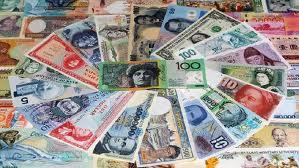Soft Australia Inflation Takes Pressure off Rate Rise

Australian inflation was weaker than expected in the first quarter of the year, data showed Wednesday, easing pressure on the central bank to hike interest rates as it tries to support the economy in its transition from a mining-driven boom.
The consumer price index (CPI) rose 0.6 percent in January-March from the previous three months, when it climbed 0.8 percent, the Australian Bureau of Statistics (ABS) said.
In the year to March the CPI was up 2.9 percent -- a tad down from 2.7 percent in January-December but within the central bank's 2.0-3.0 percent target.
Economists had tipped the rate to come in at 0.8 percent quarter-on-quarter and 3.2 percent over the year.
The Australian dollar slipped to as low as 93.15 U.S. cents from 93.67 U.S. cents Tuesday, with analysts saying the weaker figure could see the RBA keep its official cash rate at a historic low of 2.5 percent. The bank holds its next policy meeting early next month.
"It was a good result and the RBA will welcome the low reading after the very high fourth quarter read," said ANZ chief economist Ivan Colhoun.
"I think this will allow the RBA board to continue this very accommodative setting of monetary policy that it currently has for some time further.
"It's consistent with the economy recovering slowly but not dramatically at this point in time."
The RBA has kept interest rates on hold since cutting to their record low in August to boost the economy, which has been stuttering at the end of a decade-long Asia mining splurge, while crucial commodities market China slows.
The main drivers of price rises were tobacco (up 6.7 percent), petrol (up 4.1 percent) and pharmaceuticals (up 6.1 percent), while the cost of high school and university education also recorded rises of 6.0 percent and 4.3 percent respectively, the ABS said..
Those gains were partially offset by a 4.3 percent fall in furniture prices, while car maintenance and repairs eased down 3.3 percent and domestic and international travel each dipped 2.4 percent.



